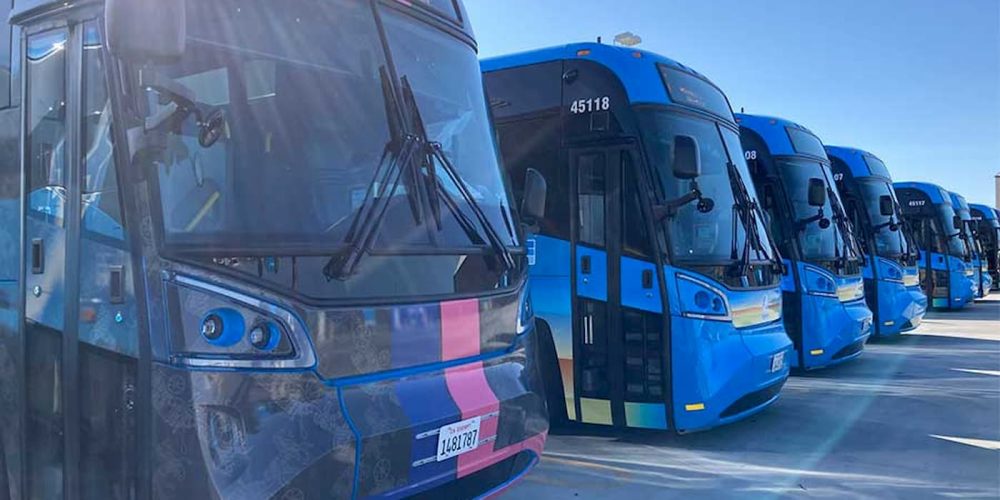
Electric buses are an upgrade over their gas-powered counterparts in every single way. New technology and software solutions are unlocking the potential behind these zero-emission heavy-duty EVs. The mighty machines are now being used to build a vehicle-to-building (V2B) “resilience hub” with emergency backup capabilities.
The project is being funded by the California Energy Commission (CEC) and is designed to show the value of bidirectional charging and V2B capabilities in electric buses.
You may have heard of vehicle-to-grid (V2G), which uses two-way flow to send energy from an electric vehicle or bus back to the grid. Several companies are solely focused on advancing bidirectional EV charging solutions to reduce emissions further and provide backup energy options.
The Intelligent Transportation Systems program (part of the Department of Transportation) estimates electric buses with V2G technology can eliminate 1,000 metric tons of C02 emissions on average over their lifetime, while electric school buses can erase over 1,400 metric tons.
The new CEC-sponsored program focuses on a similar solution, using electric buses with V2B to provide backup energy, creating a “resilience hub” for clean energy generation during emergencies.

Details behind the “V2B Oakland” program using electric buses
The “V2G Oakland” project, what it’s being called locally, will use the energy from zero-emission electric buses (owned by AC Transit) to supply clean power and filtered air-conditioning to Oakland residents.
The electric buses using V2B will be used at the West Oakland Branch of the Oakland Public Library during poor air quality from heat or smoke.
Several partners are working to bring the project to life, including the Center for Transportation and the Environment (CTE), The Mobility House, AC Transit, New Flyer, Schneider Electric, and the City of Oakland.
Each battery electric bus will generate six hours of backup energy for the library, reducing emissions that would otherwise be released with diesel generators. The US managing director at The Mobility House states:
We are thrilled to bring our “vehicle-to-everything” expertise from numerous projects in Europe and Asia to now develop the first-ever vehicle-to-building resilience hub in the US.
Jana Gerber, president of Microgrids at Schneider Electric, adds:
Powering emergency shelters with islanded energy supply is an innovative feat we are honored to help facilitate. It is also exciting to demonstrate how different technologies can integrate with each other so seamlessly and intelligently to allow for crucial backup power for the community and infrastructure.
The CEC contributed $3.2 million toward the project through its electric program investment charge strategy, with another $400,000 made possible through AC Transit and West Oakland Environmental Indicators Project (WOEIP).
Battery electric buses loaded with V2B can provide a quicker response in the event of an emergency while avoiding harmful emissions that would otherwise be released through a backup generator.
The infrastructure behind the project expects to be completed by mid-2023, and testing will take place through July 2025.
Add Electrek to your Google News feed.
google-news

Subscribe to Electrek on YouTube for exclusive videos and subscribe to the podcast.
Author: Peter Johnson
Source: Electrek



